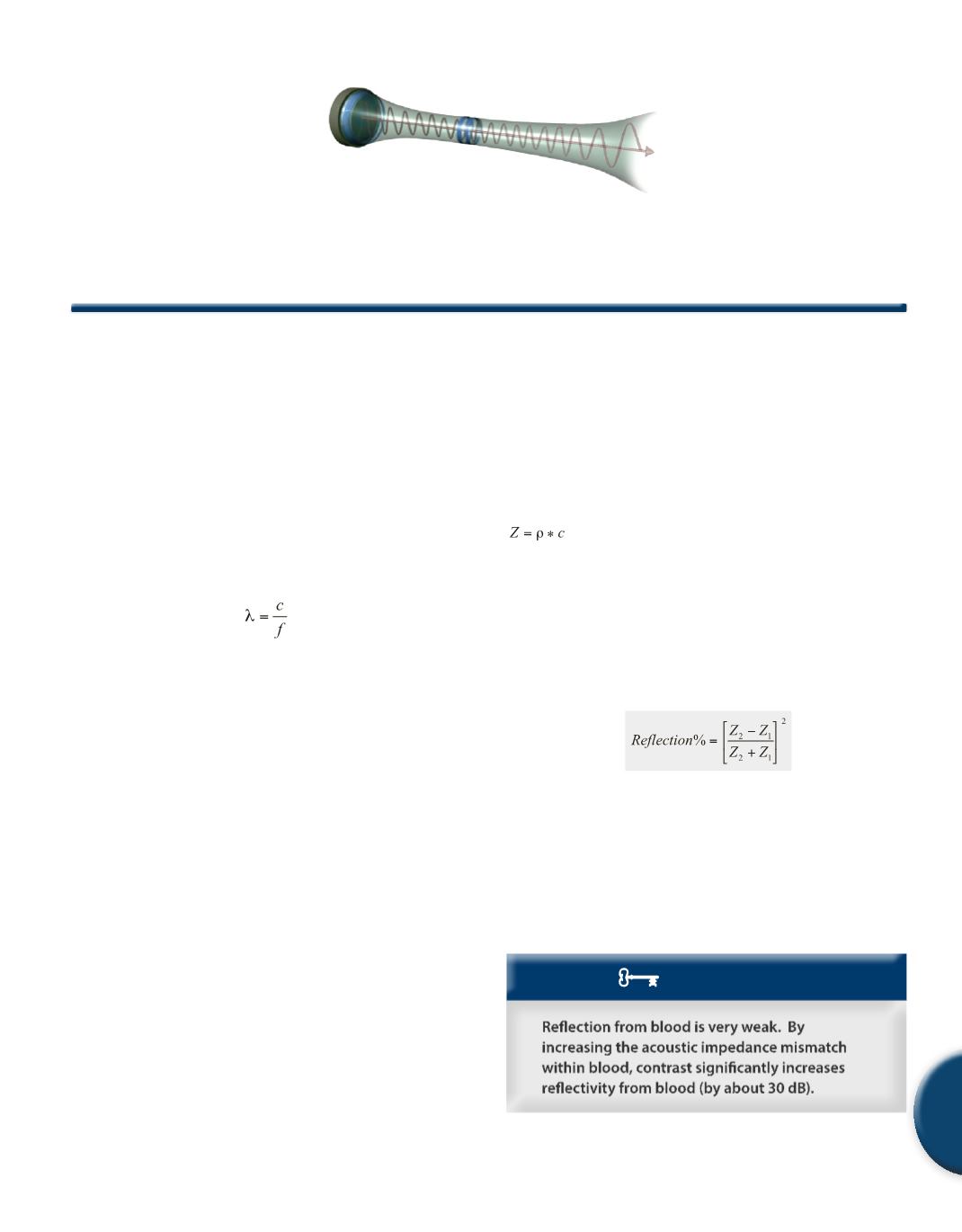
Chapter 10: Contrast and Harmonics
325
10
1. Motivation for Contrast Imaging
1.1 Overcoming Too Much Attenuation
One of the motivating factors for creating contrast imaging is how
incredibly low-level signals are when imaging red blood cells. As
we have already discussed, reflections from blood can be very weak
due to the nature of Rayleigh scattering and the minimal acoustic
impedance mismatch within blood itself. The weak reflection often
causes very poor signal-to-noise, sometimes poor enough so that
the signal is either non-diagnostic or even not detected.
Recall the equation which relates operating frequency, propaga-
tion speed, and wavelength:
.
Substituting 1540 m/sec for c and using the range of 2 MHz to 10 MHz
as the normal range for diagnostic ultrasound, the typical range for
the wavelength is calculated as 770
µ
m to 154
µ
m. A typical red
blood cell has a diameter of approximately 6 - 7
µ
m. Clearly, red
blood cells look small in comparison to the wavelength,and therefore
yield weak Rayleigh scattering.
1.2 Conventional Approaches
The approaches usually taken to overcome poor signal-to-noise are
to use a lower frequency transducer, use a different imaging ap-
proach, use a higher transmit power, or even to use a more invasive
approach such as transesophageal (TEE). All of these approaches
rely on trying to create a better interrogating signal. So,the question
arises: “Is there anything which can be done to enhance the strength
or mechanism of reflection?”
1.3 Increasing the Acoustic Impedance Mismatch
There are clearly two ways to increase the amount of backscatter:
increase the surface of the reflector, or increase the acoustic im-
pedance mismatch. Consider if an agent was added to the blood
to enhance the signal. It is obviously a very poor idea to try to add
an agent with a large backscattering surface, since the diameter of
the agent must be able to pass through capillaries without causing
obstruction. Therefore,the idea of contrast imaging is not to increase
the backscattering surface, but rather to use a contrast agent which
increases the acoustic impedance mismatch within the blood.
Given that the contrast agent will reside in the blood pool, the agent
needs to have an acoustic impedance which varies significantly
relative to the plasma and red blood cells. The most obvious choice
is to use a gas.
Recall that the acoustic impedance is given by the equation:
. Since gases tend to have relatively low densities and high
compressibility, it is expected that they will also have a low propa-
gation velocity. Therefore, since the density and propagation speed
in a gas are low, the acoustic impedance of a gas is extremely low.
In comparison, the density and propagation speed of the blood are
both significantly higher, resulting in a significantly higher acoustic
impedance. Also recall that the amount of reflection is dependent
on the acoustic impedance mismatch, given by the equation:
1.4 Increase in Signal Amplitude with Contrast
Since with a contrast agent there is a significant mismatch within
the blood, there will be significantly more backscattered energy,
and hence significantly better signal-to-noise. In fact, the increase
in signal strength using a contrast agent, in comparison to the sig-
nal strength of normal blood, is typically on the order of 30 dB, as
shown in
Figure 1
.
KEY CONCEPT
Co-authored by Patrick Rafter, MS
Contrast and Harmonics
Chapter 10


